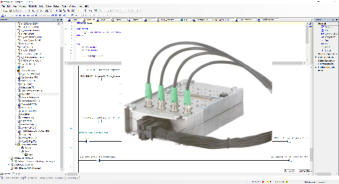
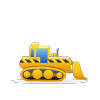
Our Dynamic series remotes are very commonly used to drive digging, loading, trenching, and
tracked machines of all types. Sometimes the remote control is designed only to drive and steer remotely -
e.g. for loading the machine on and off a trailer, or negotiating steep slopes. In other cases, the remote
control has the full functionality of the machine.
This type of machine is typically driven using single-axis proportional paddles in our FJL or FJS
styles, as this is very familiar to an operator using the manual levers. It is also possible to use dual-axis
joysticks in the FJS / FJR / FJE / FJM styles. In this case, a special mode is also available whereby the left-
right axis of the joystick adjusts the relative track speeds - i.e. pushing the joystick forward drives both
tracks forward, then moving it to the left slows the left-hand track so that the vehicle steers left. Another
feature allows a dial-potentiometer to be used to fine-tune the relative track speeds so that the vehicle
trams straight - even when operated on an incline.
Our engineers can help you choose the right methodology for your machine - contact us to see how we
can assist.
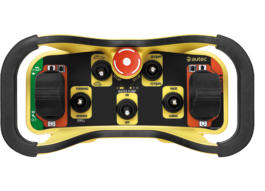
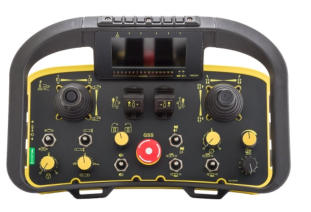

Powerful control systems can be built rapidly
using our programmable control systems, HMIs, and
distributed CAN nodes, which integrate seamlessly with
our CANOpen based radio controllers.


Our Dynamic series remotes are very
commonly used to drive digging, loading, trenching,
and tracked machines of all types. Sometimes the
remote control is designed only to drive and steer
remotely - e.g. for loading the machine on and off a
trailer, or negotiating steep slopes. In other cases,
the remote control has the full functionality of the
machine.
This type of machine is typically driven
using single-axis proportional paddles in our FJL
or FJS styles, as this is very familiar to an
operator using the manual levers. It is also
possible to use dual-axis joysticks in the FJS /
FJR / FJE / FJM styles. In this case, a special
mode is also available whereby the left-right axis
of the joystick adjusts the relative track speeds -
i.e. pushing the joystick forward drives both tracks
forward, then moving it to the left slows the left-
hand track so that the vehicle steers left. Another
feature allows a dial-potentiometer to be used to
fine-tune the relative track speeds so that the vehicle trams straight - even when operated on
an incline.
Our engineers can help you choose the right methodology for your machine - contact us to
see how we can assist.
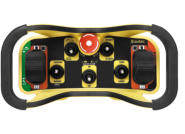
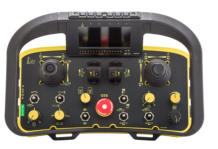
Powerful control
systems can be built
rapidly using our
programmable control
systems, HMIs, and
distributed CAN nodes,
which integrate seamlessly
with our CANOpen based
radio controllers.
